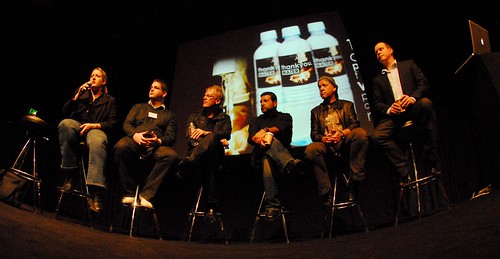In conversation after conversation with marketing directors and CMOs I keep reaching the same conclusion: our efforts at skill building are woefully inadequate to keep up with the pace of customer change.
There are two factors at play here:
- Senior marketers remain risk averse so pursue conservative strategies
- Junior marketers willing to work with and adapt new approaches are hobbled by the strategic frameworks and their skills degrade.
Unfortunately for marketers, our customers are more agile than ever, readily adopting and consuming new models of engagement, interaction and purchase. Just think about retail disruption and the way new entrants like Zara have been able to swan into our landmark locations and capture new and existing markets while the dinosaurs of Australian retail cut costs, flounder online and bark about GST and an unfair playing field.
The same can be said of media. Platforms like Junkee and the Guardian have flown in the face of a struggling media sector, out performing traditional mastheads right at the time that it seemed that the Media market was imploding.
When you take your eye off the customer ball, you open the door of opportunity to those with a more nimble business model.
In many ways, customers are like water – they follow the path of least resistance, and the simple fact is, our outmoded channel, contact and conversion paths are resolutely locked in a bygone era circa 2005.
On the positive side, there’s never been a better time to invest in both marketing and marketing skills – for both are the engines of innovation and growth in a customer-centric world.
Let’s see what this might mean.
Marketing is digitally determined but strategy is still king
If budget (and privacy) was no option, we could conceivably track, measure and optimise every customer interaction. But would this quantifiable improve our marketing? Would it make our customers more likely to buy, buy more often, or recommend us?
One of my favourite sayings is “Just because we can doesn’t mean we should”. And this applies now more than ever. While digital has transformed the work, methods and metrics of marketers, choosing what to do and when should not always be ceded to algorithms. Strategy is a vital part of your brand and its experience and marketers should be make use of the digital domain to inform decisions, not make them.
Use social signals and analytics to inform strategy
While the term “big data” is often heralded as the answer to every marketer’s dream, it’s often surprising how well we can use “small data” to radically transform our customers experience. At various stages of the buying journey, our customers will often consciously or inadvertently reveal their intentions. They may tweet about an issue or interest in a new product. They may share interesting new offers that appear in their Facebook timeline. Or they may even photograph and geotag a product they see in a shop or online using Instagram.
Moreover, they may also tag – and by tag, I mean recommend, a product to a friend. This could be a simple tag where a friend is notified by name or ID. Or it could vine with a warm recommendation, like “you’ll love this, Gavin”.
These social signals may be too inconsequential to warrant direct engagement, but at scale, could denote the first stages of a trend or an opportunity to “go viral”. The only way to know this is happening is to incorporate social analytics into your marketing business process. In doing so, it will bring you one step closer to your customer.
Automating for frictionless brand experience
Social analytics also provide vital insight into your customers’ journey. With even a small amount of journey mapping and data analysis, you’ll soon learn of the various friction points across various touch points. And where those friction points exist, marketing automation can be used to overcome or avoid that friction.
It could be as simple as sending an in-app message, email or text message to pre-empt a problem or offer a workaround. It could be that an abandoned online shopping cart triggers a follow up from your call centre. There are many scenarios, but all should be designed to provide a value add to your customer.
The common thread linking your brand and your customer is bound up in experience. Our increasing use of technology takes us part of the way, but the foundation of strategy, creativity and tech know-how that must be in the DNA of the modern marketer is what allows it to flourish. And that means investing, nurturing and growing your team and their capabilities. In fact, skills may be the best marketing investment you’ll make all year.



![Reblog this post [with Zemanta]](https://img.zemanta.com/reblog_e.png?x-id=3213baf0-5b1f-4a82-a450-3ad003b29b93)